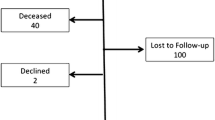Abstract
Background: A national survey was undertaken by the Italian Society for Laparoscopic Surgery to investigate the prevalence, indications, conversion rate, mortality, morbidity, and early results of laparoscopic antireflux surgery.
Methods: Beginning on January 1, 1996, all of the centers taking part in this study were asked to complete a questionnaire on each patient. The questionnaire was divided into four parts and covered such areas as indications for surgery and preoperative workup, type of operation performed and certain aspects of the surgical technique, conversions and their causes, intraoperative and postoperative complications (within 4 weeks), and details of the postoperative course. The last part of the questionnaire focused on the follow-up period and was designed to gather data on recurrence of preoperative symptoms, postoperative symptoms (dysphagia, gas bloat), and postoperative test findings.
Results: As of June 30 1998, 21 centers were taking part in the study and 621 patients were enrolled, with a median of 27 patients per center (less than one patient/month). The most popular technique was the Nissen-Rossetti (52%), followed by the Nissen (33%) and Toupet procedures (13%). Other techniques, such as the Dor and Lortat-Jacob, were used in the remainder of cases. Patients who received a Toupet procedure had a higher incidence of defective peristalsis (p < 0.05). The conversion rate to open surgery was 2.9%. The most common causes of conversion were inability to reduce the hiatus hernia or distal esophagus in the abdomen and adhesions from previous surgery. Perforation of the stomach and esophagus occurred in <1% of patients. Mortality was nil. Postoperative complications were observed in 7.3% of cases. The most common complication was acute dysphagia (19 patients), which required reoperation in 10 patients. No differences in the incidence of acute dysphagia were found for the different surgical techniques employed. Follow-up data were obtained for 319 patients (53%): 91.5% of the patients remained GERD symptom–free; severe esophagitis (grade 2–3) healed in 95% of the patients; lower esophageal sphincter (LES) manometric characteristics (pressure, abdominal length, and overall length) improved significantly after surgery (p < 0.005); and acid exposure of the distal esophagus decreased.
Conclusions: Laparoscopic antireflux surgery has no mortality and a low morbidity. Symptoms and esophagitis are resolved in >90% of patients. Despite these favorable results, however, this type of surgery is not yet as widely employed in Italy as in other countries.
Similar content being viewed by others
Author information
Authors and Affiliations
Additional information
Received: 12 February 1999/Accepted: 8 June 1999
Rights and permissions
About this article
Cite this article
Zaninotto, G., Molena, D. & Ancona, E. A prospective multicenter study on laparoscopic treatment of gastroesophageal reflux disease in Italy. Surg Endosc 14, 282–288 (2000). https://doi.org/10.1007/PL00021300
Published:
Issue Date:
DOI: https://doi.org/10.1007/PL00021300




